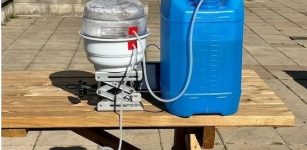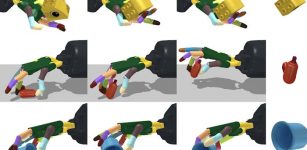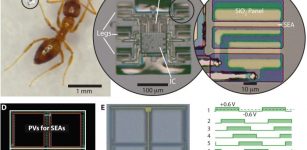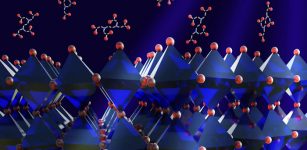“Lab On Skin”: Smart Bandage Monitors The Status Of Chronic Wounds, Delivers Treatment, Speeds Up The Healing Process
Eddie Gonzales Jr. – MessageToEagle.com – The smart bandage, outfitted with three different microfluidic components—miniature modules that channel and otherwise control the flow of liquids—clears excess moisture from wounds while providing real-time data about biomarkers present.
An iCares smart bandage. Credit: Caltech
“Our innovative microfluidics remove moisture from the wound, which helps with healing. They also make sure that samples analyzed by the bandage are fresh, not a mixture of old and new fluid.
To get accurate measurements, we need to sample only the newest fluid at a wound site,” says Gao, who is also a Heritage Medical Research Institute Investigator. “In this way, iCares can watch in real time for important biomarkers of inflammation and infection.”
Indeed, in a new paper in the journal Science Translational Medicine, Gao and his colleagues show that the smart bandage can detect molecules such as nitric oxide, an indicator of inflammation; and hydrogen peroxide, a biomarker of infection; potentially one to three days before patients experience symptoms.
iCares smart bandage wearable device. Credit: Lance Hayashida/Caltech
In a further advance, the team has developed a machine-learning algorithm that can successfully classify the patients’ wounds and predict healing time with a level of accuracy comparable to that of an expert clinician.
The bandage is composed of a flexible, biocompatible polymer strip that can be 3D printed at low cost. It integrates nanoengineered biomarker sensor array, which is disposable for hygiene and single-use applications.
The system also includes a reusable printed circuit board that handles signal processing and wireless data transmission to a user interface, such as a smartphone.
The triad of microfluidic modules within iCares includes a membrane that sucks wound fluid from the surface of the wound, a bioinspired component that shuttles the fluid across the device onto a sensor array where it is analyzed, and a micropillar module that carries the sampled fluid away to the outside of the bandage.
Written by Eddie Gonzales Jr. – MessageToEagle.com Staff Writer












